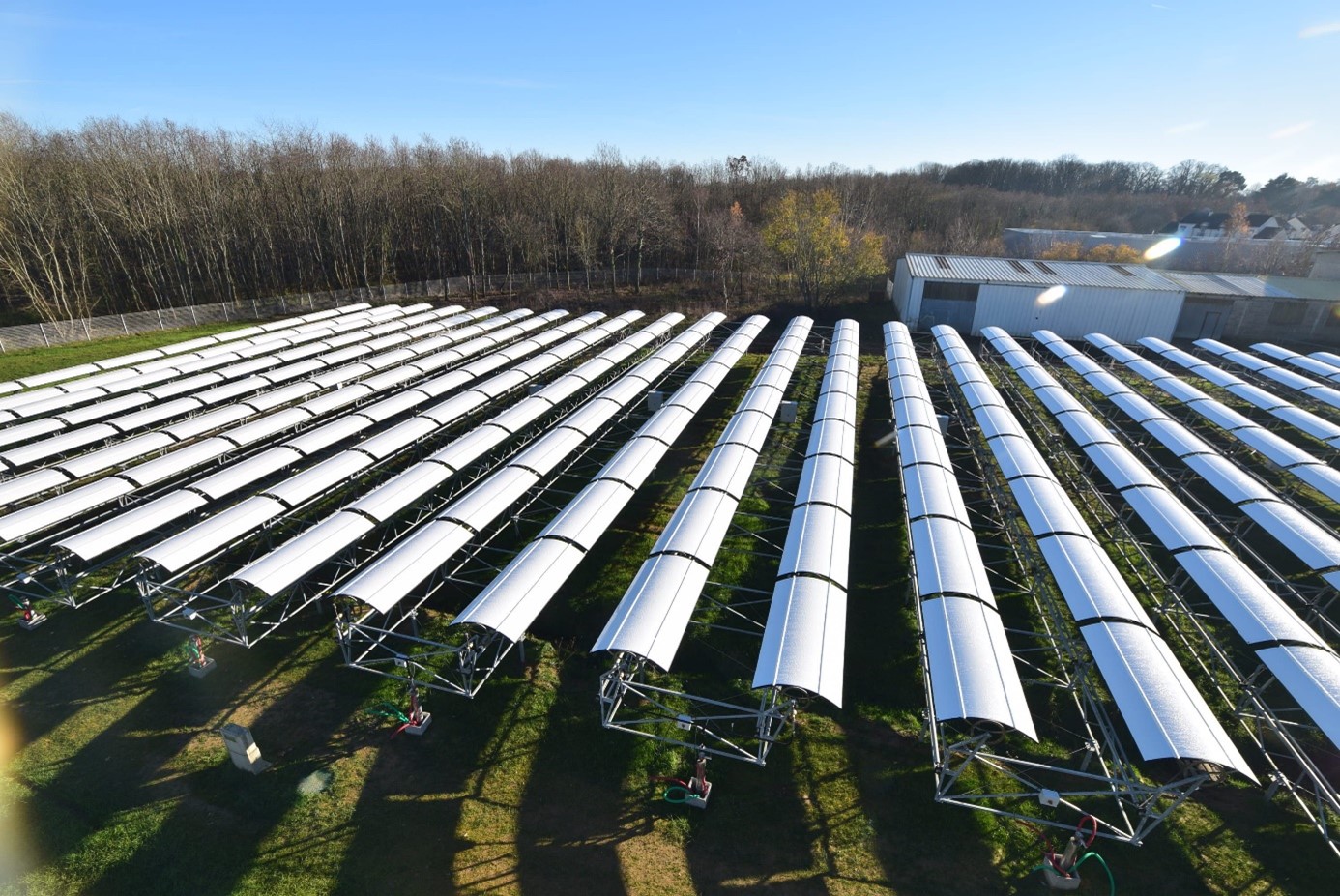Frequently asked questions
Helioclim collectors are installed in rows, with each row motorized on a single axis. The collectors can thus be positioned “face-down” to protect the glass from hail and reduce wind exposure.

Since these are concentrating collectors, when the collector is tracking the sun, all solar rays are focused on the parabola’s focal point, i.e., the absorber tube. Therefore, there are no reflections that could interfere with aircraft pilots. Several reflection studies have been conducted by an independent engineering firm for projects near airports; these studies showed that, except for very rare and manageable cases, no significant glare is created.
The collector rows track the sun throughout the day. Each row has a single motor. The rotation speed of the collectors is extremely slow, making the movement almost inaudible. Therefore, there is no noise disturbance for the surrounding area.
The fluid circulating in the collectors is most often demineralized water. On sites experiencing very low temperatures, it may be necessary to use a glycol-water mixture to prevent freezing when the collectors are not in operation.
The collectors can reach temperatures up to 180 °C. However, the solar absorbers are enclosed in vacuum-sealed glass tubes, keeping the tube surfaces cool; the mirrors never heat up because they are reflective, and the piping is fully insulated. Additionally, a fence surrounding the field prevents access to the equipment by unauthorized personnel.
The solar reflectors move into a safe position, with the mirrors facing downward, whenever sunlight is insufficient. This greatly reduces soiling of the reflectors. However, some natural dirt from pollen and other airborne particles still accumulates. A simple rinse with demineralized water, approximately three times a year, is sufficient.
Apart from cleaning, only a simple annual maintenance is required: it consists solely of a visual inspection of all piping and a check of the chain tension.
A weather station is installed on each field. It monitors sunlight, outdoor temperature, and wind speed. If sunlight is insufficient or wind exceeds 60 km/h, the collectors are automatically moved into a safe position. The collectors are currently certified to withstand winds of up to 230 km/h in the safe position (qualification carried out in a wind tunnel at CSTB). Regarding snow, when temperatures drop below 0 °C, the control system forces the collectors to rotate twice a day to remove any snow accumulation on the back of the collectors.
The absorber, onto which the solar rays are concentrated, consists of a metal tube surrounded by a vacuum-sealed glass tube. The absorber is therefore insulated from the effects of outdoor temperature, and the collector’s efficiency depends solely on sunlight. In winter, on a sunny day, the efficiency is therefore the same as in summer.
The power supply for each collector row is backed up by a battery, allowing the collectors to automatically move into a safe position during a power outage.
Spare parts are available for all components of the project. Lead times may vary depending on the part required.
The Heliolight 4800 collectors and MAM 250 machines are entirely manufactured in France, in our workshop in Cannes, Alpes-Maritimes.